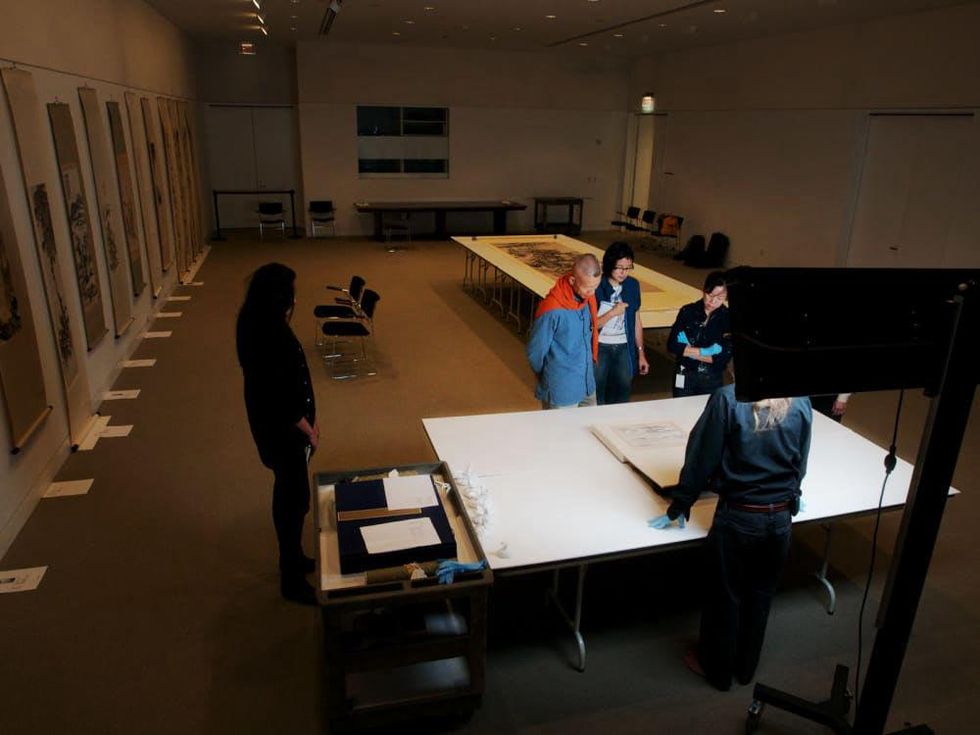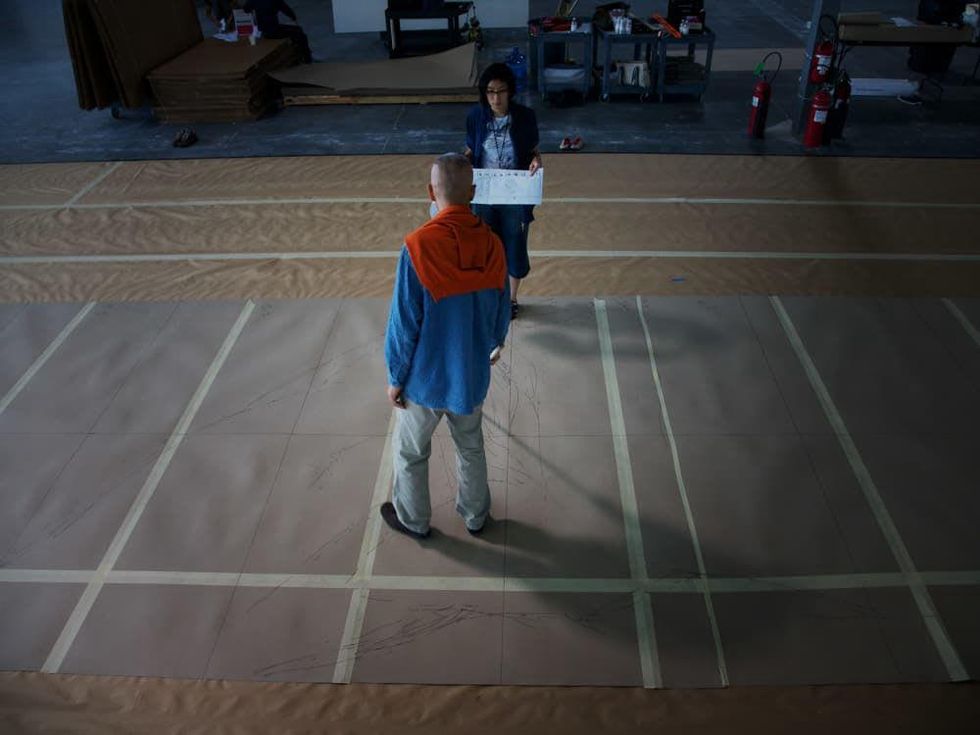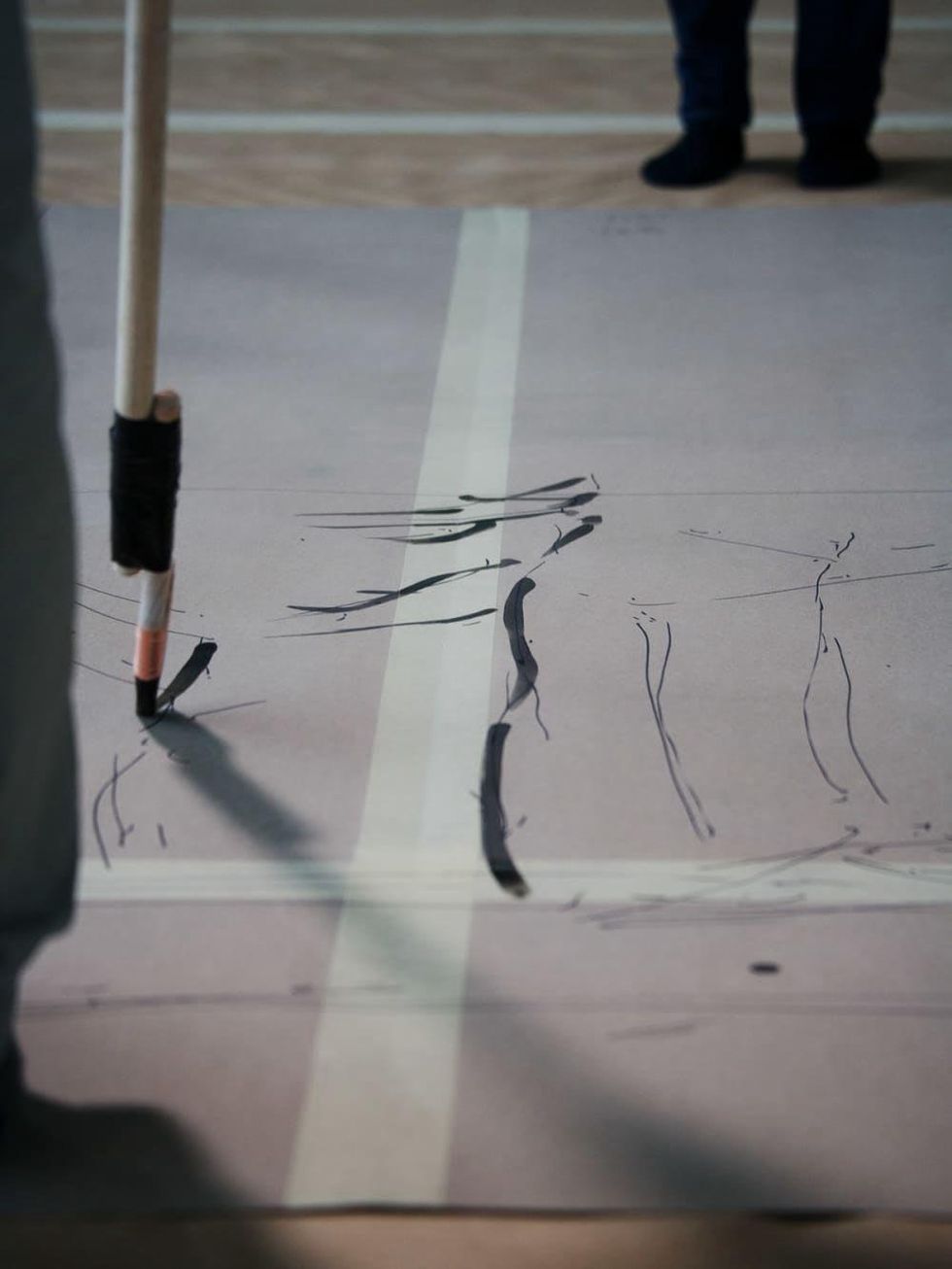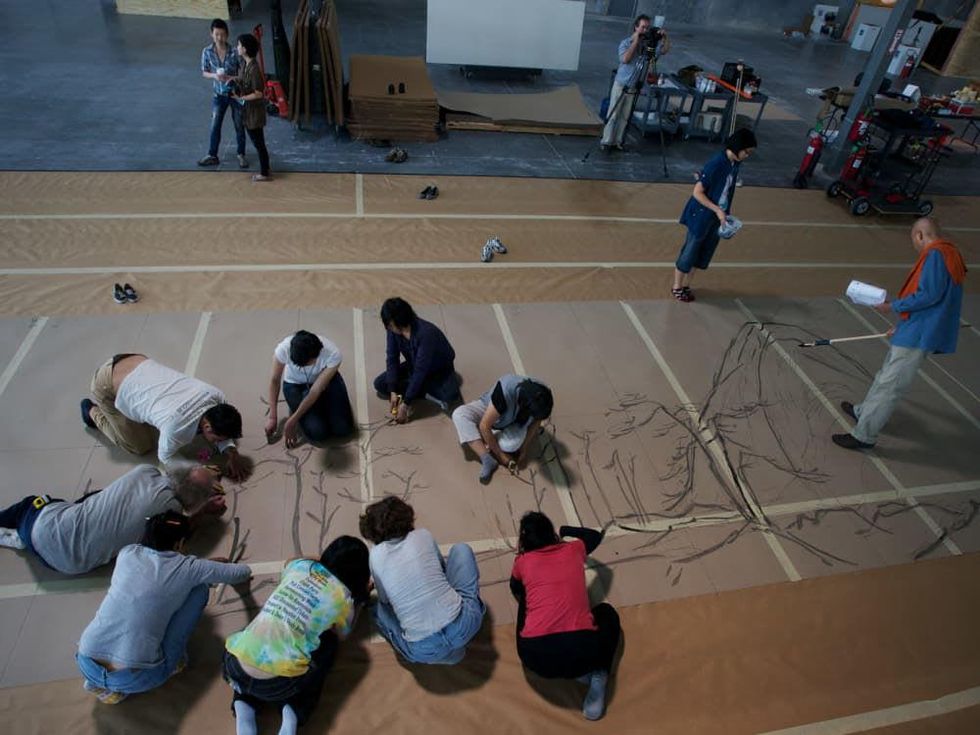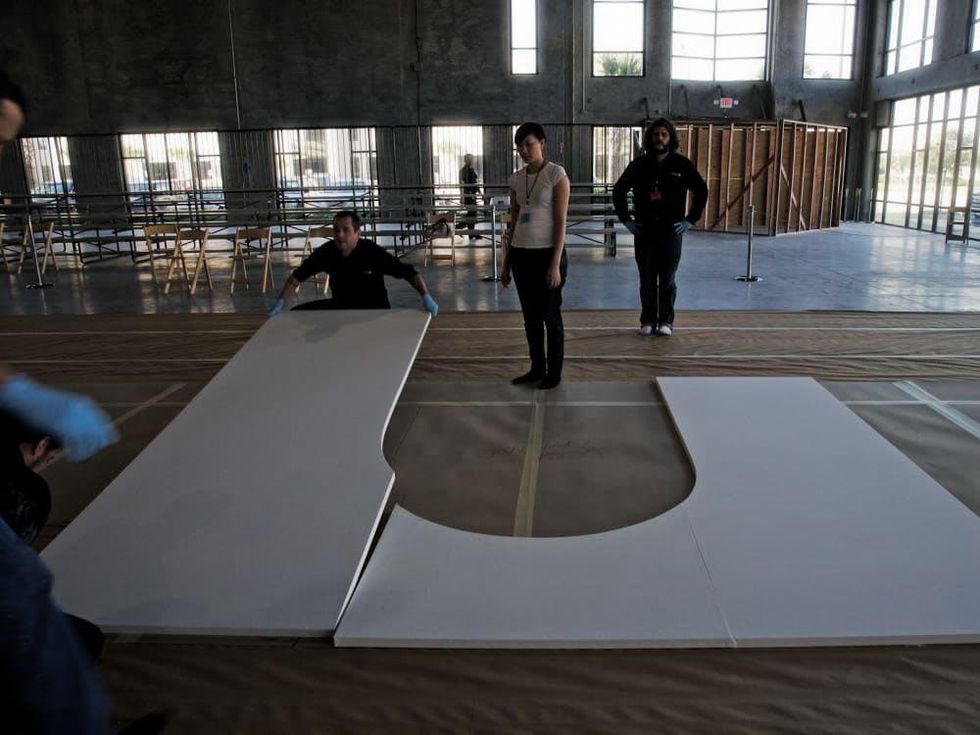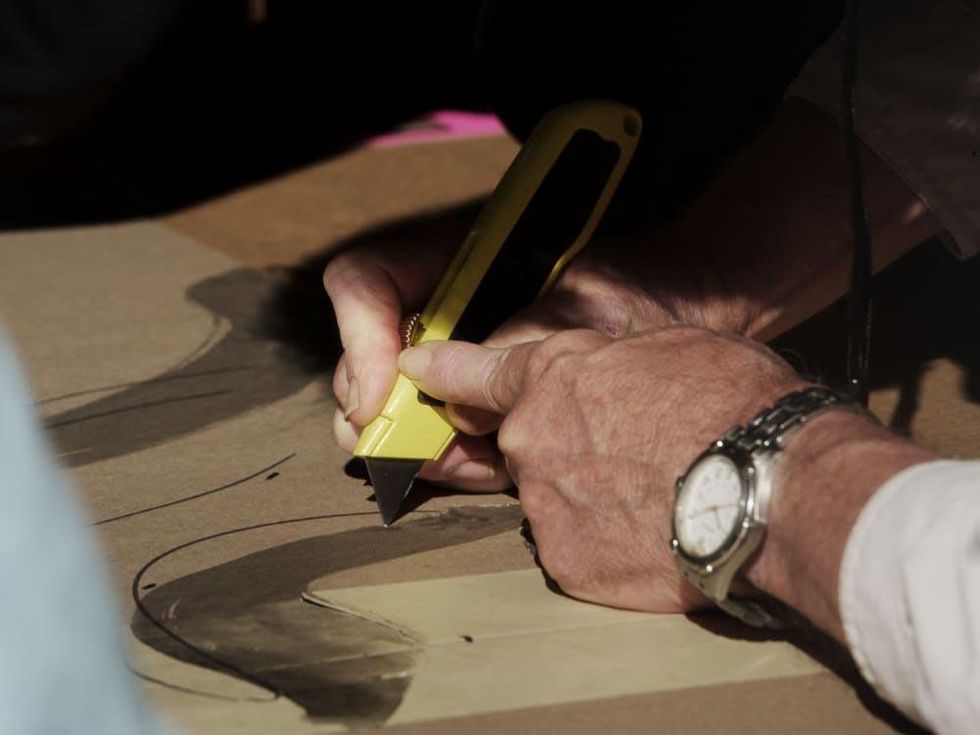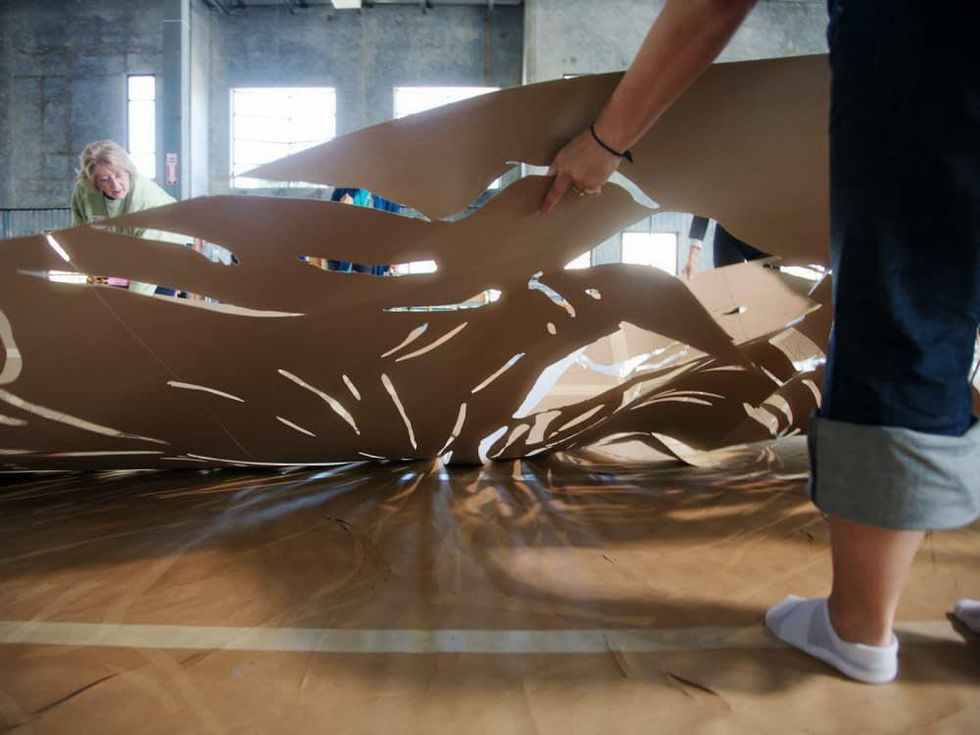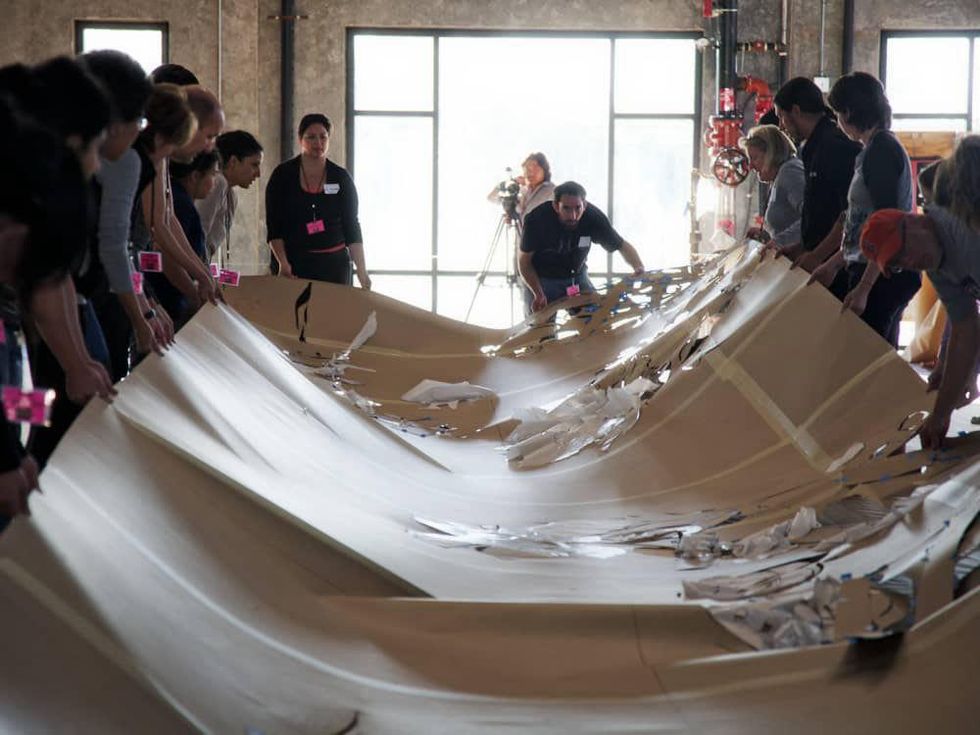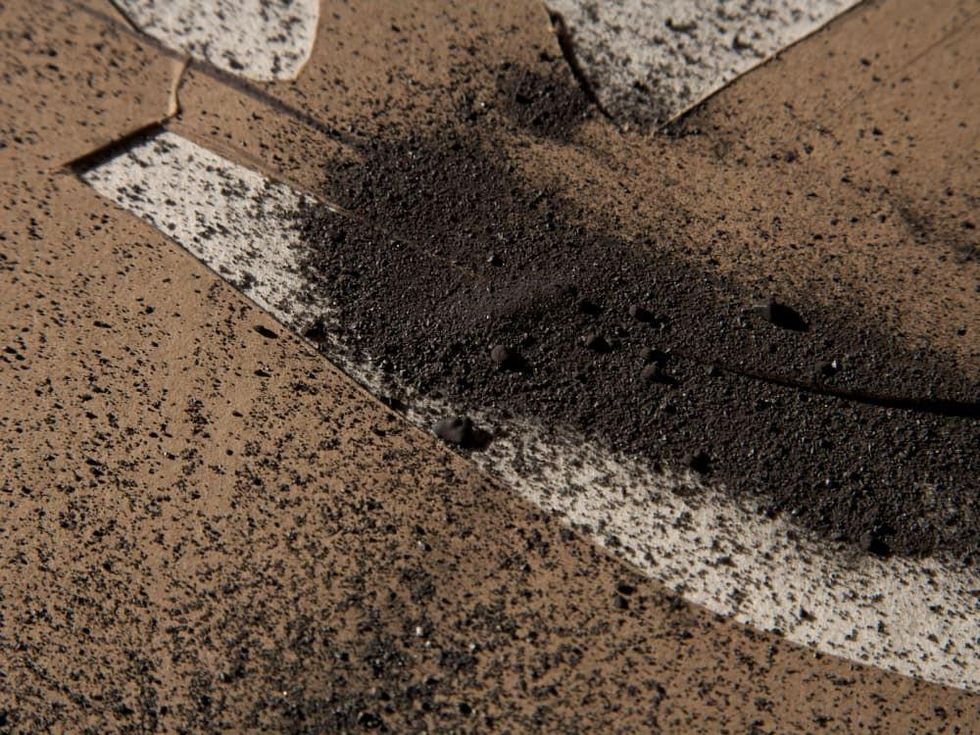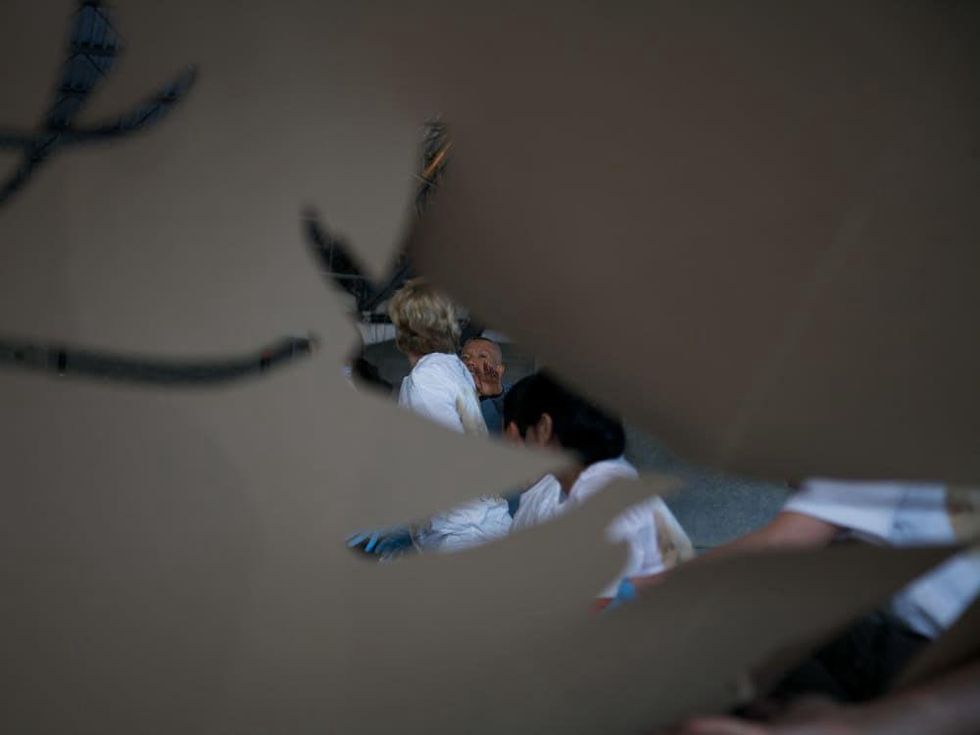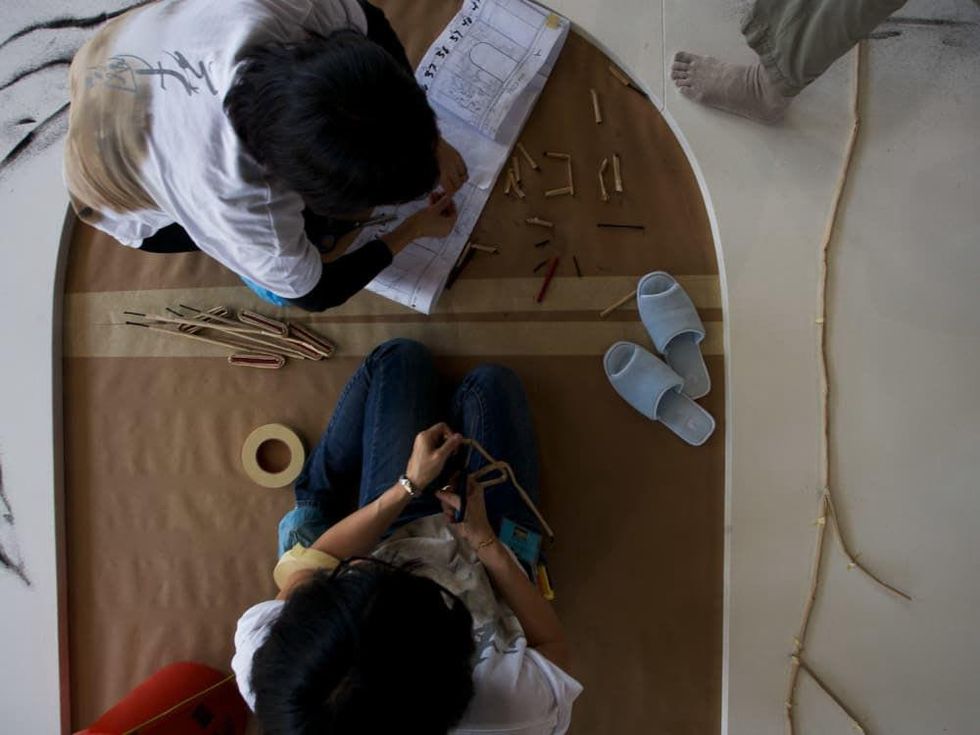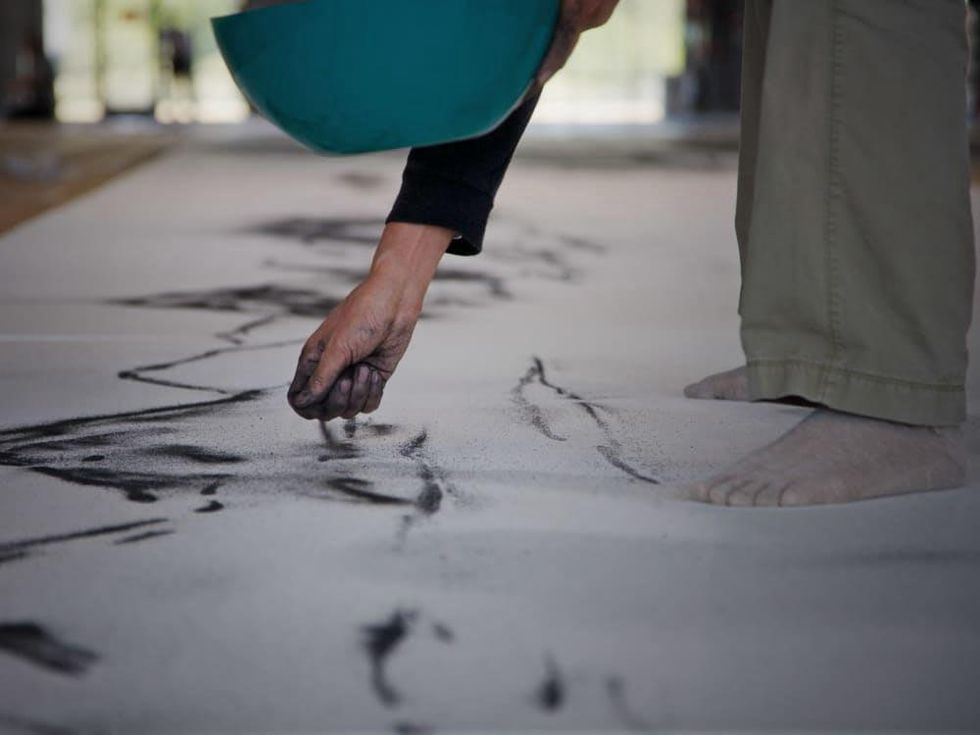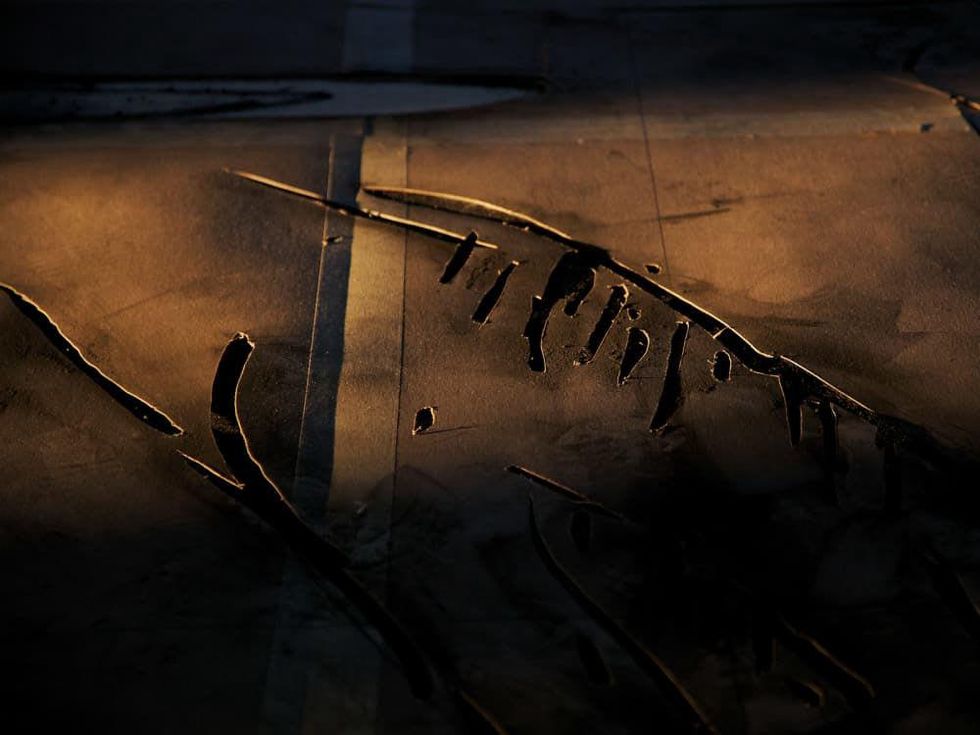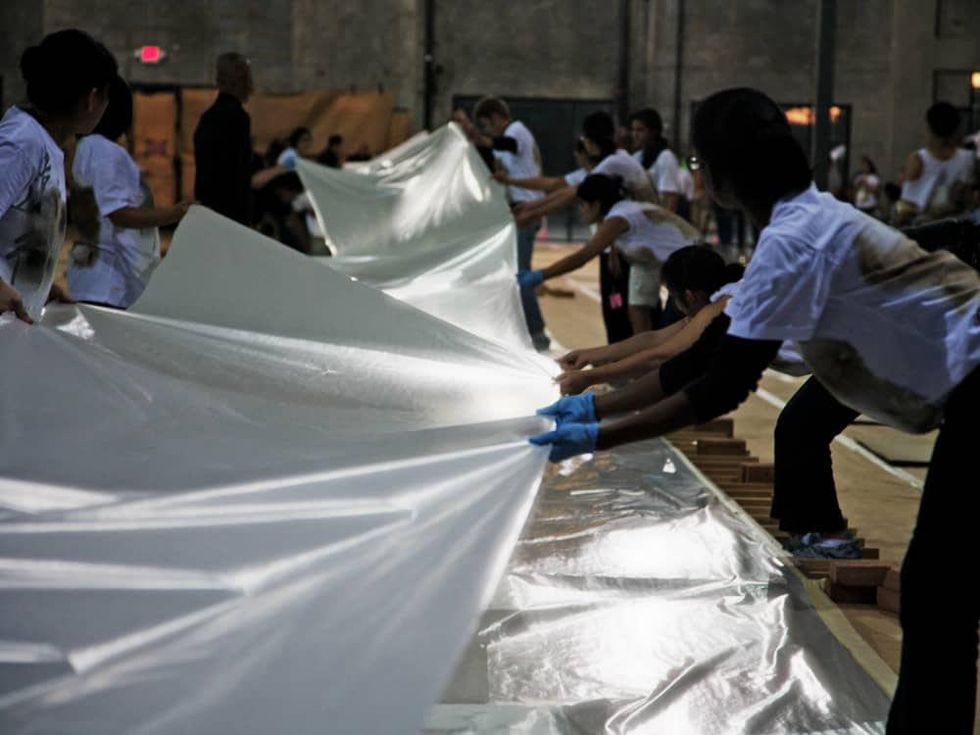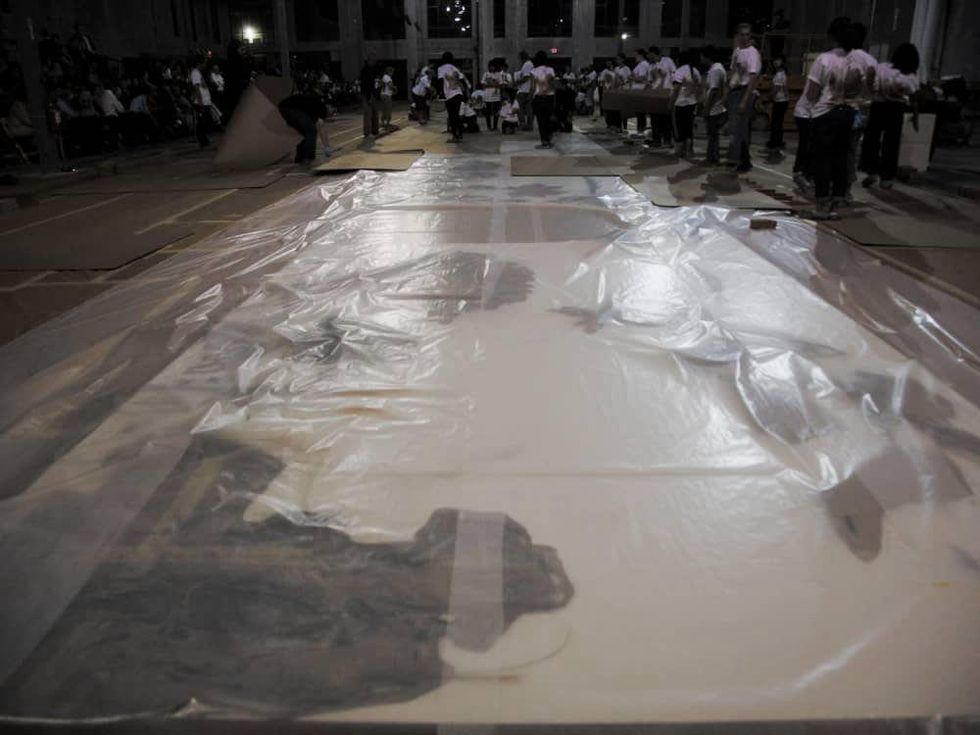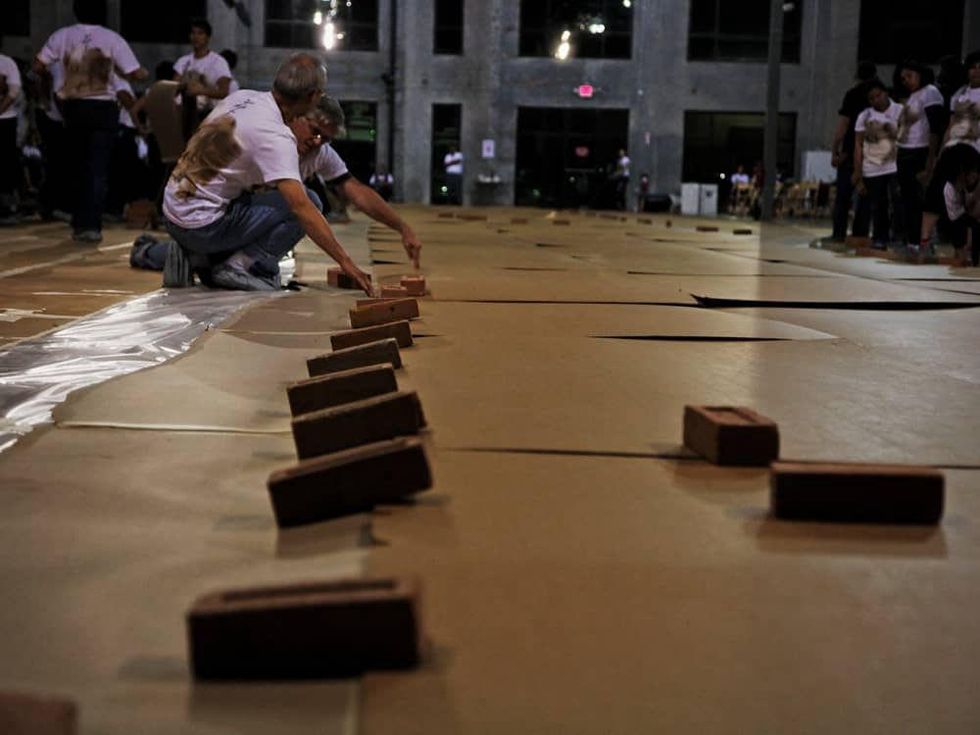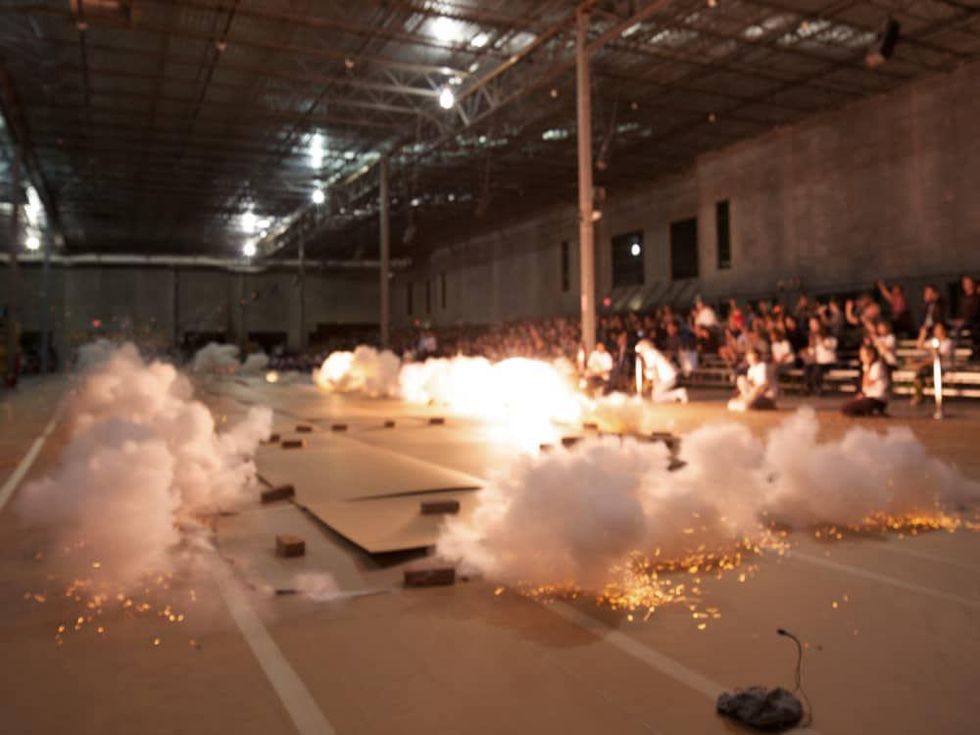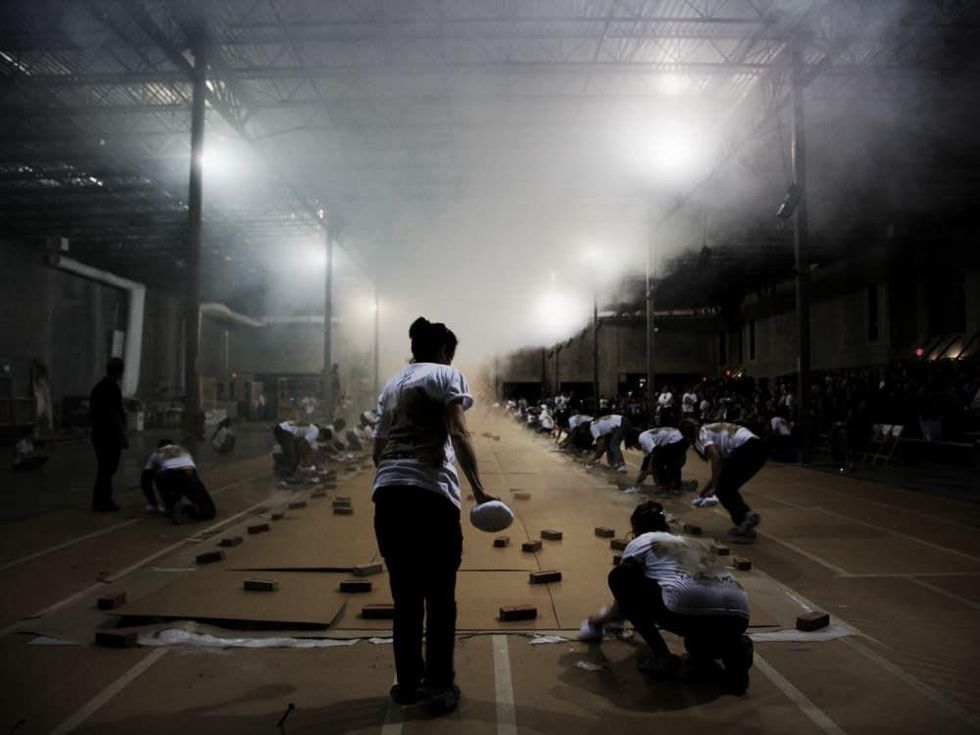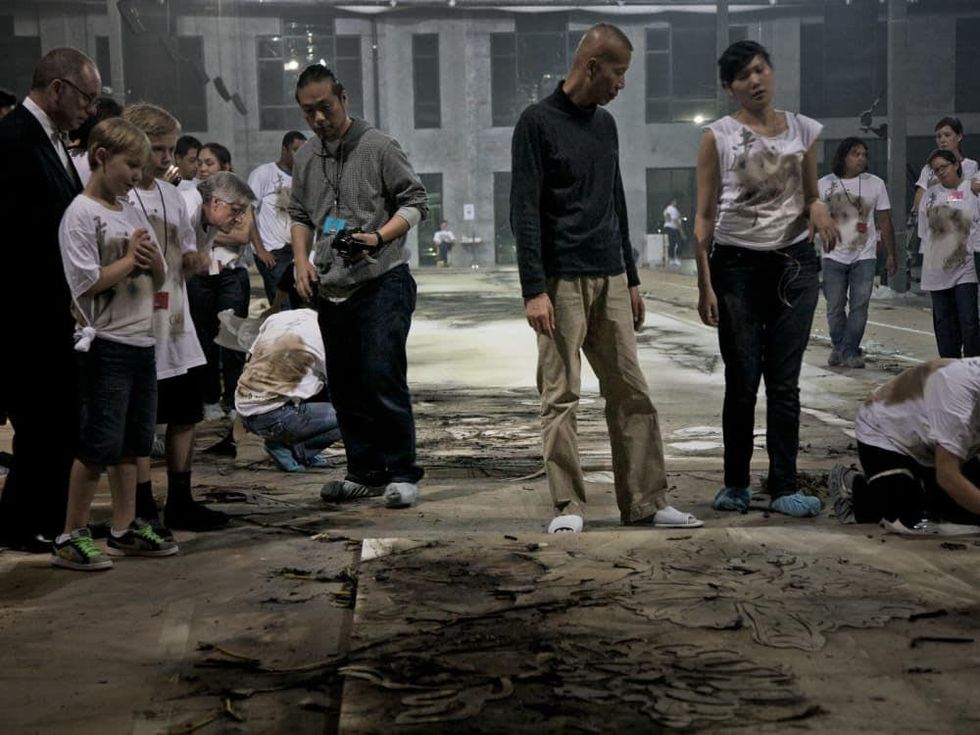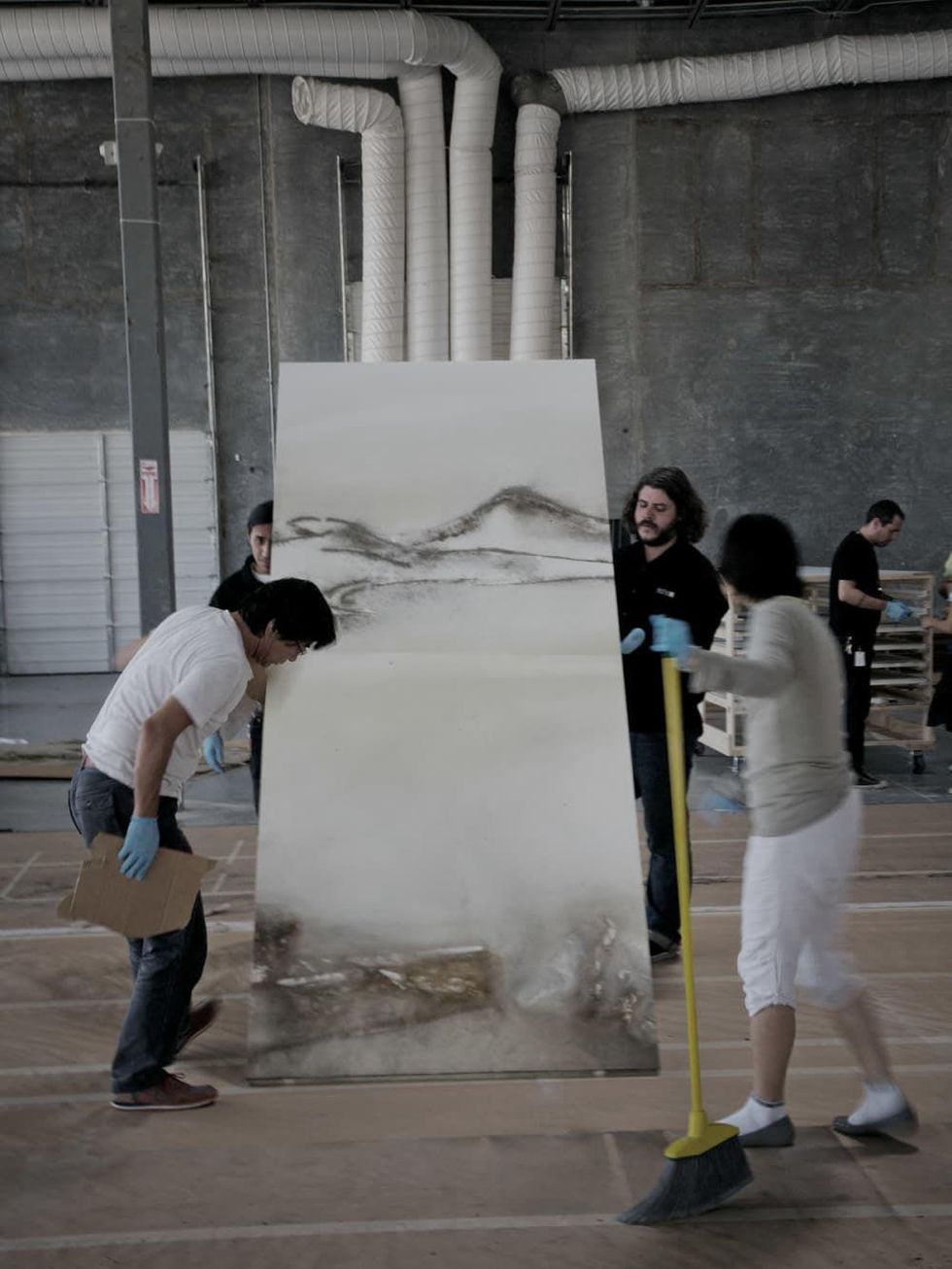Cliff Notes
Art in action: Cai Guo-Qiang's big evening was a real blast
 Workers put the stencils in placePhoto by Everett Taasevigen
Workers put the stencils in placePhoto by Everett Taasevigen Cai Guo-Ciang's right hand was covered with gunpowderPhoto by Everett Taasevigen
Cai Guo-Ciang's right hand was covered with gunpowderPhoto by Everett Taasevigen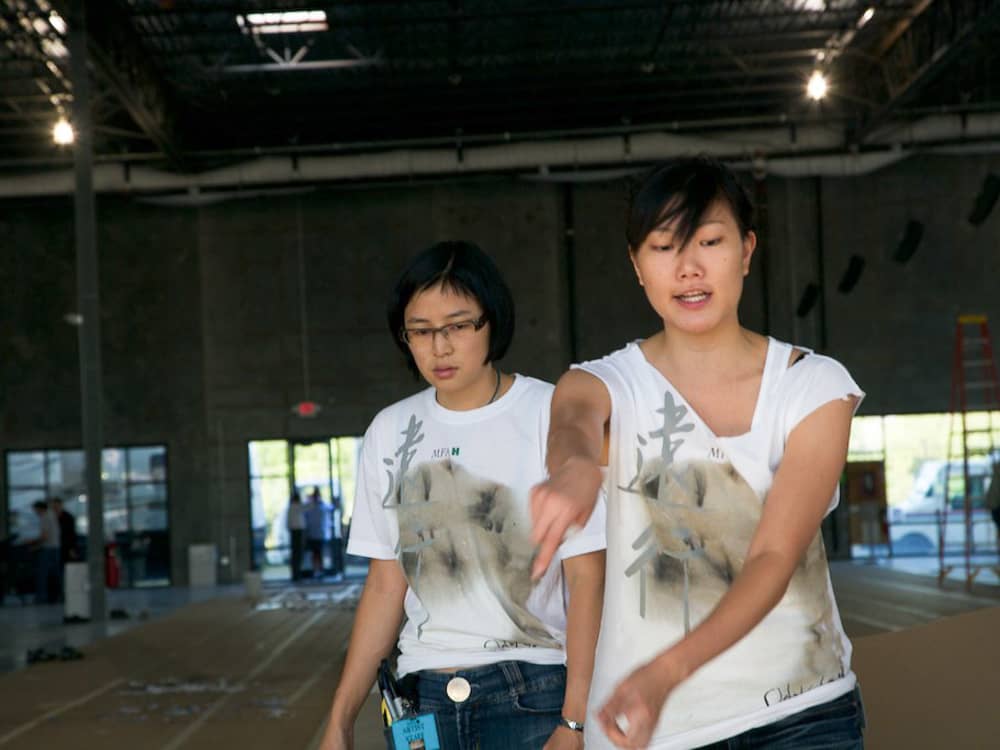 Chinyan Wong, from left, and Kelly Ma kept the audience entertained through thelong waitPhoto by Everett Taasevigen
Chinyan Wong, from left, and Kelly Ma kept the audience entertained through thelong waitPhoto by Everett Taasevigen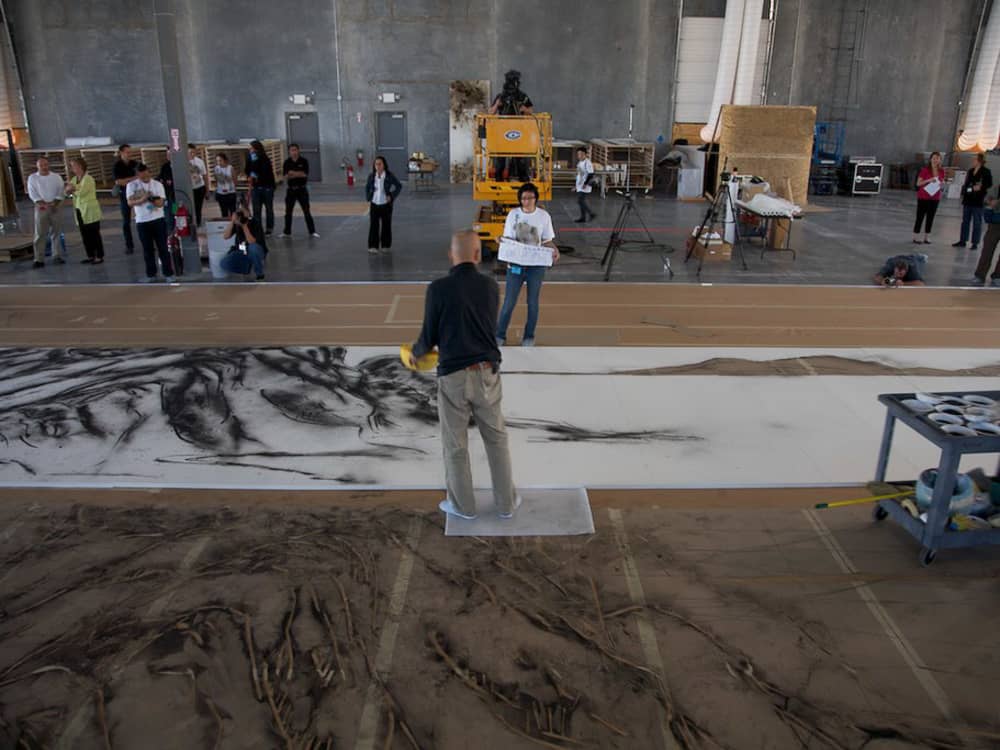 Photo by Everett Taasevigen
Photo by Everett Taasevigen Photo by Everett Taasevigen
Photo by Everett Taasevigen After the bleachers cleared out, Cai Guo-Qiang was left with his finishedproductPhoto by Stephen Newman
After the bleachers cleared out, Cai Guo-Qiang was left with his finishedproductPhoto by Stephen Newman
It was the ultimate in performance art.
As an audience composed of Museum of Fine Arts, Houston donors and friends watched from hard steel bleachers for several hours Wednesday night, a grim-faced Cai Guo-Qiang pensively walked the perimeter of the massive work of art he was creating before their eyes. Time and time again, he bent down and scooped his hand into a bowl of black gunpowder and sprinkled it like swirly sugar onto the stenciled drawings laid out on the floor. Before the evening was even half over, his hand was as black as a piece of coal. It made you wonder how he ever washes off the sooty gunpowder residue.
He moved nimbly on the warehouse's hard concrete floor and I wondered how his back and legs had survived for several days — until I looked down at his feet. He shuffled by in pastel blue terrycloth bedroom slippers.
Fire marshalls had limited the number of those who could watch the gunpowder artist ignite Odyssey, the artwork he was creating for the new MFAH China Arts Gallery, which only made it a hotter ticket. On the front row, museum trustees Jeannie Kilroy, Marty Goossen, Prabha Bala, Mike Linn and lead donors Anne and Albert Chao watched intently. Nearby, Nidhika and Pershant Mehta, major contributors to the museum's Arts of India Gallery, and their young children eagerly awaited the explosion.
"I can't imagine something as destructive as gunpowder coming alive in such an instructive way," said Nidhika Mehta.
MFAH trustee Michael Zilkha and Jeffrey Deitch, new director of the Los Angeles Museum of Contemporary Art, also sat on the front row but they abruptly dismissed a question about what they thought of the evening's activities and shooed a young reporter away.
As the evening dragged on, the audience grew a little restless but the excitement didn't fade as Cai methodically worked, refusing to be rushed.
They watched transfixed as staff from his studio and a team of MFHA workers painstakingly laid thin wax paper over the gunpowder drawings and covered them with a thin sheet of cardboard and then a thicker piece, with bricks on top so the cardboard wouldn't pop off when the explosion happened. He explained the multi-layered procedure was intended to trap the smoke emmited by the gunpowder and allow it travel along the canvas.
While they worked, Cai's staff assistant, Kelly Ma, kept the crowd entertained with her instructions to the workers and to the audience.
"Do not attempt to do this on your own," she shouted just before Cai lit the fuse."And do not panic. Can you promise me that?"
Like a lot of the volunteers and studio staff, she had sliced up her official Odyssey T-shirt so that it fell down over one shoulder, Flashdance style. She looked like a contestant on So You Think You Should Dance.
At last it was time to light a fuse on either side of the long drawing. Officials had estimated it would take around six seconds for the painting to ignite. It was over in two — barely enough time to get earplugs in place — followed by a burst of white smoke that rose to the ceiling.
In fact, it happened so quickly that a camera mounted on a tiny car that was set up to run the length of the drawing couldn't keep pace.
As workers removed the cardboard and paper — like peeling layers of an onion — a strong odor of sulfur permeated the air. It smelled like the Fourth of July.
Afterwards, Cai flashed a smile, although he seemed concerned about a center portion of the large artwork.
"It came out even better than we expected,' he said, through an interpreter. "The smoke traveled so beautifully. It managed to pierce the sense of the artificial, but maintain a contemporary image."
Nearby Ma accepted compliments for her running commentary. "I hope it was at least entertaining," she said.
Even the fact that the spark out-traveled the camera car didn't ruffle the evening, she said.
"Sometimes the imperfect is the most perfect."

